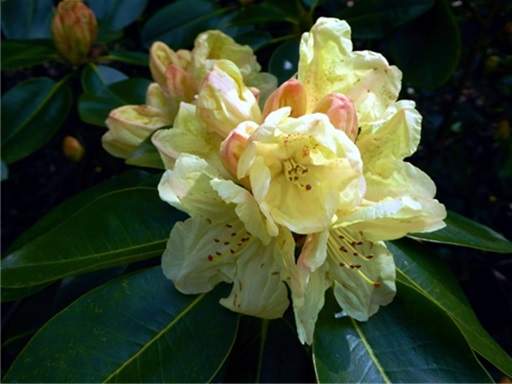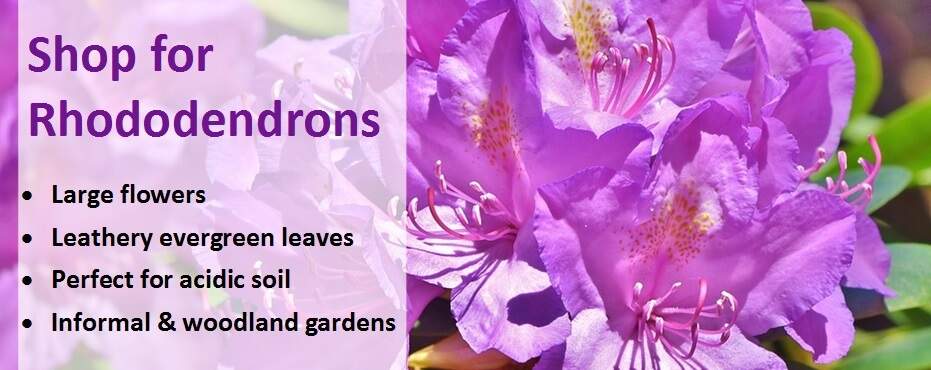Rhododendron vs. Azalea - what's the difference?
Producing a spectacular display of vibrant flowers through spring and summer, rhododendrons and azaleas are popular garden shrubs for gardens of all sizes. But what's the difference between the two?

Rhododendron
Rhododendrons and Azaleas are both from the Rhododendron family. Rhododendron is a genus (group) of plants with common characteristics, whilst azaleas are a sub-group within this genus, rather than being a genus of their own. There is no definitive way of distinguishing all azaleas from all rhododendrons but each has its own qualities and characteristics which are important to understand when choosing the right plant for your garden.
- Evergreen vs. Deciduous. Rhododendrons are evergreen, holding onto their leaves all year round (technically there are 2 exceptions but we would not recommend these varieties so we ignore them here). Azaleas are deciduous and lose their leaves each autumn, with the exception of Japanese azaleas which are evergreen. This makes Japanese Azaleas popular at Christmas, with their low growing habit and vibrant flower colours.
- Growth Habit. Azaleas are small to medium sized shrubs with many, smaller stems whilst rhododendrons tend to be larger plants with fewer stout stems. Everything about rhododendrons is on a more grand scale, with bigger flowers and foliage than azaleas. The exception is dwarf alpine rhododendrons which are much smaller ranging from 20-80cm above ground after 10 years, making them a great choice for growing in groups in the rock garden.

- Foliage. Rhododendrons have big, oval, leathery leaves which are often scaly or have small dots on the under side of the leaf. Azaleas have smaller, narrower foliage which is often hairy along the mid-rib and underside of the leaf and takes on brilliant hues of yellow, orange and crimson before falling to the ground in autumn (except for Japanese azaleas). Japanese evergreen azaleas actually produce 2 sets of foliage each season: a first in the spring followed by a second in the summer. The loss of the first set is gradual and may not be noticed by a casual observer. Deciduous azaleas start to become clothed with fresh mid-green leaves again in spring, around the same time as the flowers start to fade.
- Flowers. Rhododendrons produce large, bell-shaped flowers in clusters whilst azaleas blooms are smaller and either tubular or funnel-shaped. Both mainly flower in spring but with a growing range of summer flowering varieties now on offer, with "encore azaleas" blooming in early spring then again in the summer. If you're very keen on detail you'll also notice rhododendrons have 10 stamens whilst azaleas have 5, which was one of the key differentiations in the original taxonomy classifications. Hybrid rhododendrons are those which have been bred as a cross between different varieties to produce more spectacular flowers. Like traditional rhododendrons they have large leaves and large flowers held in trusses, some of which are scented, making them ideal as flowering hedge or foundation plants.
- Growing Conditions. Rhododendrons are quite fussy, typically requiring partial of dappled shade (except for alpine varieties which prefer full sun) in an acidic, moist yet free, draining, humus-rich soil. They also do not respond well to very exposed sites with cold or drying winds. Azaleas are generally more adaptable - a moist, acidic soil is still a 'must have' because like rhododendrons they are also shallow rooting, but they'll be a bit more forgiving on aspect, soil quality and exposure. Japanese azaleas are again the exception, being more sensitive of cold winters than both deciduous azaleas and rhododendrons.

Japanese Azalea
Share this page:


